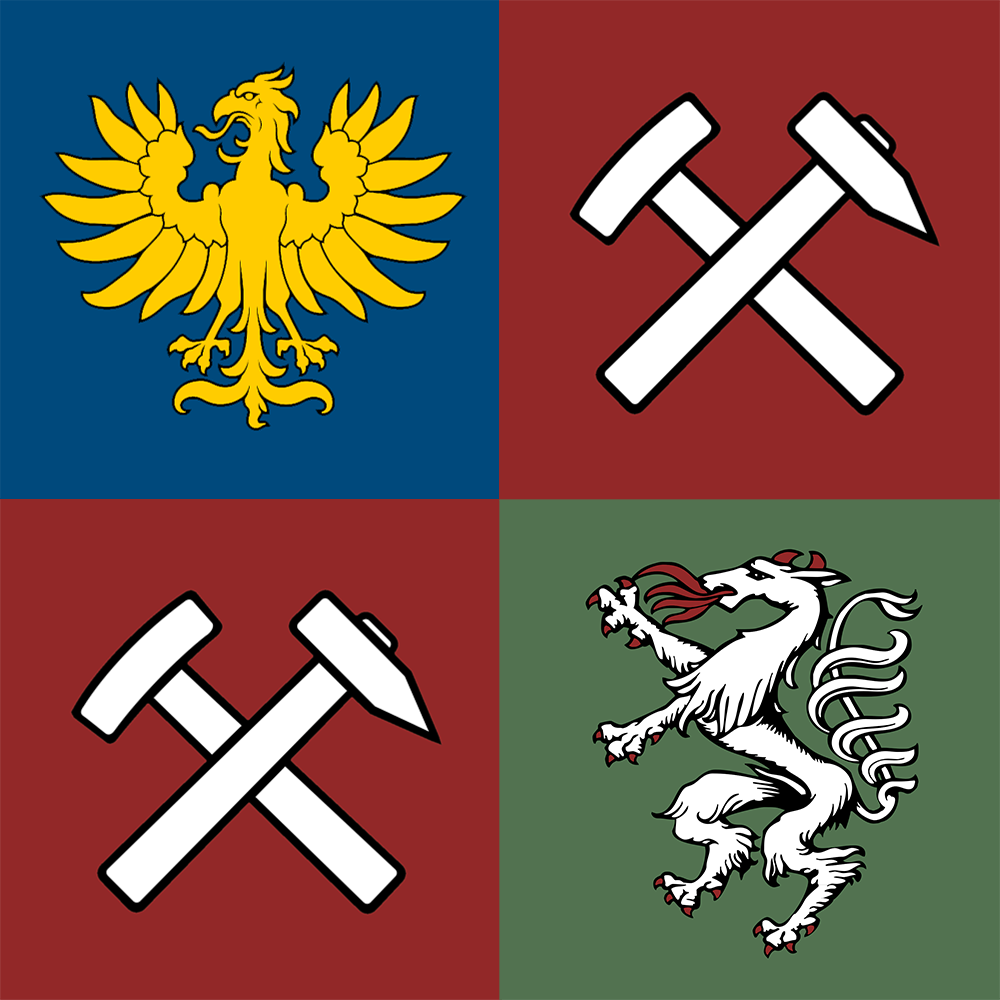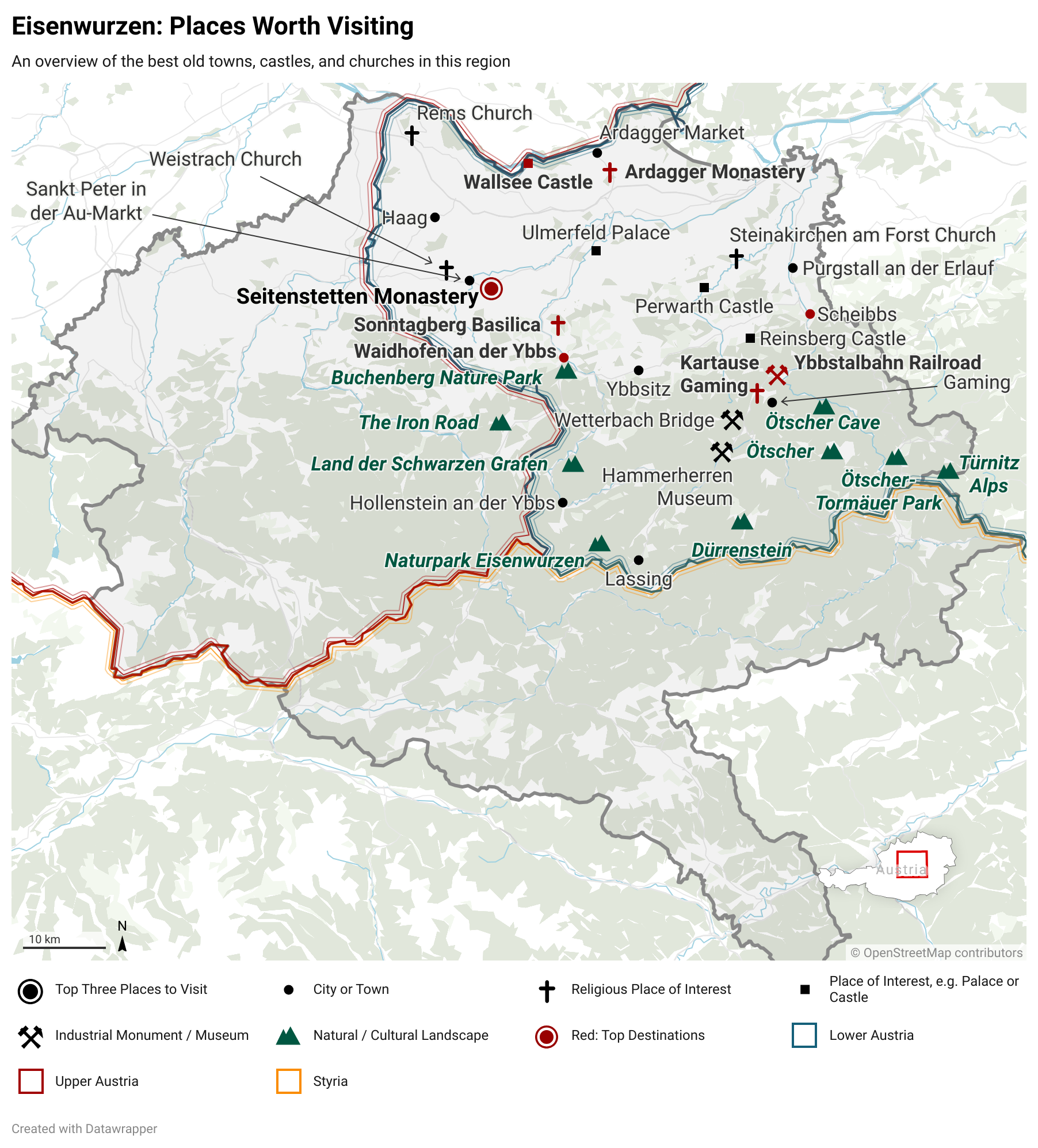
Through the dark valleys of Austria's Alpine foothills ran a critical trade route carrying iron ore from the rich mines of the Styrian Mark to the industrial centers of the Danube and the markets that lay beyond. In centuries past the many valleys would have echoed with the sounds of hammermills and furnaces belching black smoke, giving the region the nickname "Land of the Black Counts" and its current one, Eisenwurzen or Ironroots.

The Eisenwurzen district, whose name means “Iron Roots,” is a storied region at the crossroads of Lower Austria, Upper Austria, and Styria, famed for its dramatic landscapes and industrial heritage. The name Eisenwurzen derives from the area’s centuries-old association with iron mining and smelting, which shaped its valleys and communities from the Middle Ages onward. Encompassing the rugged foothills of the Eastern Alps, the district stretches along the upper reaches of the Enns, Ybbs, and Steyr rivers, embracing towns like Waidhofen an der Ybbs, Steyr, and Mariazell.
Travelers to Eisenwurzen can explore imposing castles, baroque churches, and open-air museums that reveal the district’s industrial roots. The region’s forests and mountains are ideal for hiking, cycling, and winter sports, while the crystal-clear lakes and rivers invite fishing and boating. Key attractions include the Eisenstraße (“Iron Road”), a scenic route linking historic ironworks and forges, and the picturesque town of Steyr, where medieval architecture meets industrial history.
Eisenwurzen’s legacy as an ironworking hub connects it to the broader story of Austrian development, with local traditions, festivals, and crafts still echoing its metallurgical past. Today, it offers visitors a unique blend of natural beauty, cultural depth, and living history.